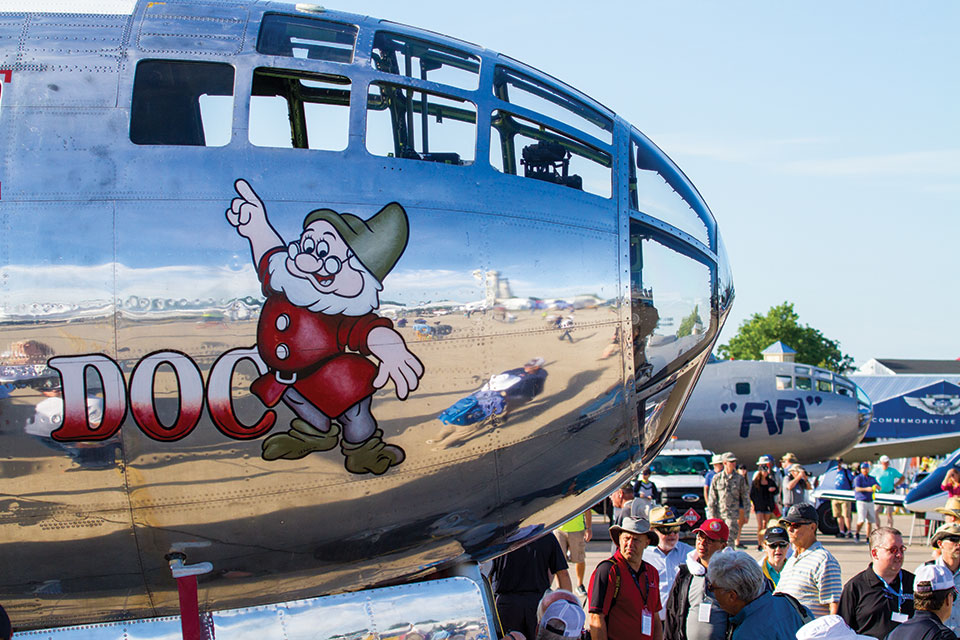FIFI and Doc: The Gang’s All Here
By By Frederick A. Johnsen
July 25, 2017 - FIFI and Doc are it — the only two flying B-29 Superfortresses in the world. And they’re both at EAA AirVenture 2017, which is a first. If the newly restored Doc is getting a well-deserved day in the sun, that should not cast a shadow over FIFI. Restorers and operators of both B-29s gathered in front of Doc yesterday to describe Doc’s recovery and restoration, and the crews’ relationship as “a B-29 co-op,” which is an exclusive club.
When you want to have the second flyable B-29, it just makes sense to talk with the men and women who operate the first one. The Commemorative Air Force’s FIFI flight crew helped get Doc airborne for the first time last year. The Doc team said they learned some valuable things during its restoration that were shared with FIFI’s crew, too.
Looking beyond the obvious similarities of two silver bullet-shaped bombers on the ramp, some differences stand out. FIFI carries a full complement of General Electric gun turrets, typical of the B-29 fleets that flew bombing missions over Japan. Doc left the Boeing plant in Wichita minus turrets, and flew a noncombat Air Force career as a specialized radar aircraft.
Both Superfortresses have stories to tell, and both have crews standing by to tell AirVenture visitors those stories. Later this week, FIFI will make flights from Appleton, carrying passengers who pay for the adventure, which helps keep FIFI flying.
In the 1980s, Tony Mazzolini learned about Doc slumbering on a Navy test bombing range in California’s Mojave Desert. On his first trip to see the derelict B-29, Doc’s unmistakable form grew ever larger as he approached. “As we got closer to it I almost didn’t wait for the truck to stop” before leaping out to explore the silent Superfortress, Tony told the crowd.
The only glaring omission was Doc’s lack of a vertical fin. It had been removed so the bomber could clear a power line while being towed to the range. Tony began a multiyear set of negotiations with the Navy, Doc’s custodian, to get title to the bomber. Tony agreed to furnish a restored B-25 bomber to the naval aviation museum at Pensacola, upon which he would get title to the B-29.
At one point, according to a Commemorative Air Force (CAF) member with FIFI at AirVenture, the CAF considered sponsoring the restoration of Doc, but one complex Superfortress is enough for any museum to manage. However, CAF members did provide expertise to help Doc’s volunteers for many years before the B-29’s triumphant rollout in 2016.
The CAF’s Rick Jarvis, FIFI’s senior crew chief, joined in the discussion in front of Doc. “To this day, we have a great relationship with these guys,” Rick said of the crew supporting Doc.
Dan Wimberly, who crafts tools to construct Boeing 737s for a living in Wichita, embraced the restoration of Doc passionately after initially spurning the truckloads of old fuselage and wings that he said looked to be full of broken glass, desert dirt, and even dead animals.
Dan said old Superfortress engineering drawings were converted to CAD programs so new parts can be manufactured when needed. He marveled at the sophistication of the B-29, which was designed “with slide rules and pencils,” not computers.
AirVenture is fortunate to have both flying B-29s on the grounds this year. They both warrant an introspective visit.

